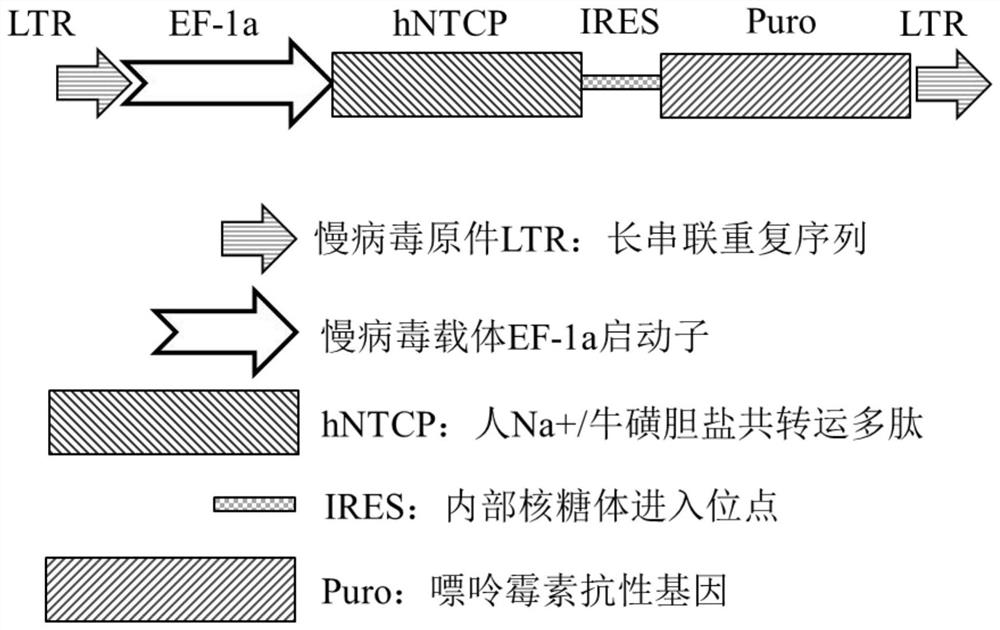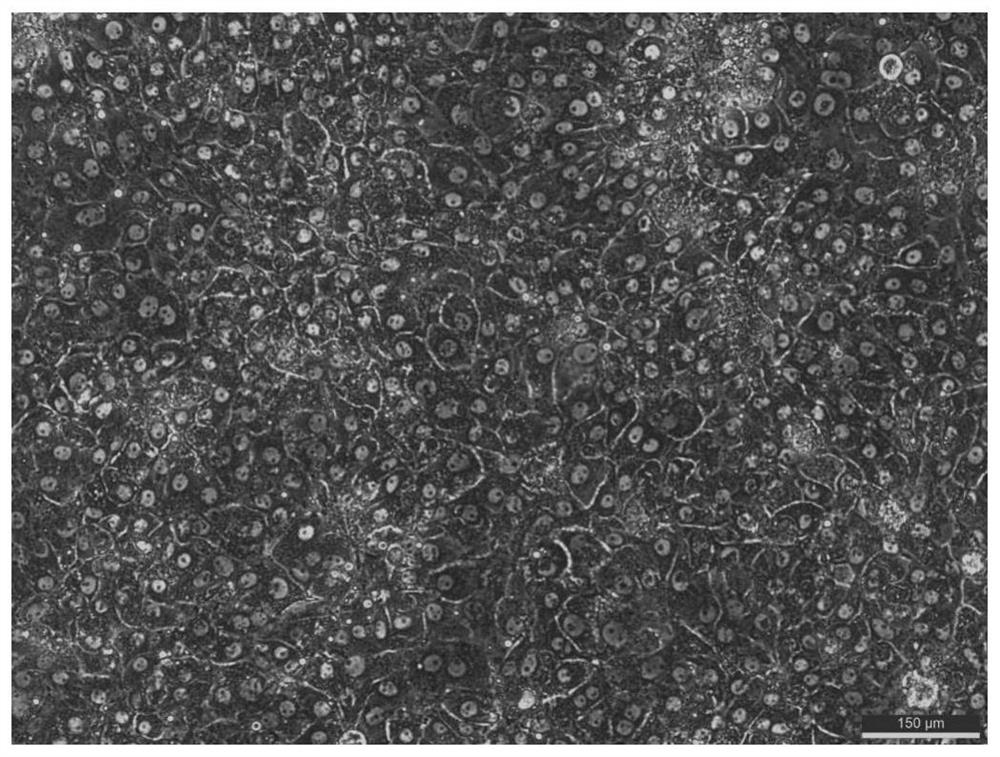A method for establishing a hepatitis B virus-infected cell model using primary pig hepatocytes and hntcp recombinant lentivirus
A technology of primary hepatocytes and recombinant lentivirus, applied in cell dissociation methods, artificial cell constructs, retroRNA viruses, etc., can solve the problems of establishing hepatitis B virus-infected cell models and achieve small differences between cell batches Effect
- Summary
- Abstract
- Description
- Claims
- Application Information
AI Technical Summary
Problems solved by technology
Method used
Image
Examples
Embodiment
[0078] The method for establishing a hepatitis B virus-infected cell model using pig primary liver cells and hNTCP recombinant lentivirus in this embodiment comprises the following steps:
[0079] Step 1: Prepare hNTCP recombinant lentivirus concentrate
[0080] Using the calcium phosphate transfection method, the lentiviral packaging plasmid pCMV dr8.91, the lentiviral packaging plasmid pMD.2G and the hNTCP overexpression plasmid pWPI-hNTCP-Puro were simultaneously transfected into 293T cells at a mass ratio of 2:1:3 48 hours after transfection, the culture supernatant containing lentivirus was collected and concentrated to obtain hNTCP recombinant lentivirus concentrate.
[0081] (1) hNTCP expression plasmid construction
[0082] The lentiviral packaging plasmid pCMV dr8.91, the lentiviral packaging plasmid pMD.2G and the hNTCP overexpression plasmid pWPI-Puro were all obtained from the global plasmid sharing Addgene website (http: / / www.addgene.org / ). Obtain human Na from ...
PUM
 Login to View More
Login to View More Abstract
Description
Claims
Application Information
 Login to View More
Login to View More - R&D
- Intellectual Property
- Life Sciences
- Materials
- Tech Scout
- Unparalleled Data Quality
- Higher Quality Content
- 60% Fewer Hallucinations
Browse by: Latest US Patents, China's latest patents, Technical Efficacy Thesaurus, Application Domain, Technology Topic, Popular Technical Reports.
© 2025 PatSnap. All rights reserved.Legal|Privacy policy|Modern Slavery Act Transparency Statement|Sitemap|About US| Contact US: help@patsnap.com



